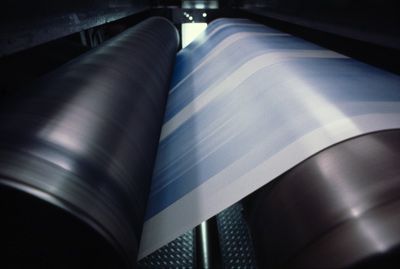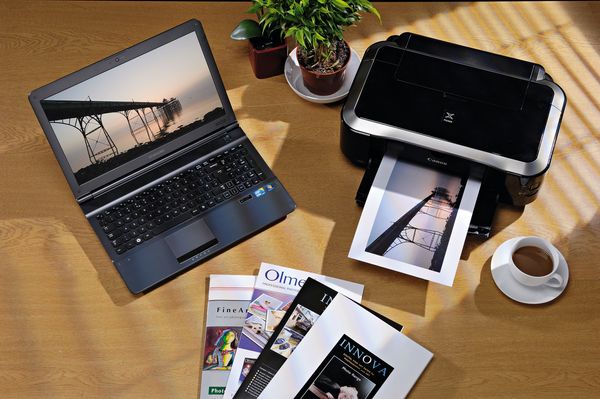It used to be a hallmark of corporate life — the aroma of cheap coffee wafting through the office and mixing with the smell of a hot laser printer feverishly churning through one long report after another. These days, the rancid coffee odor may still linger, but in many places the printer aroma is waning. That's because hard-copy printing isn't quite as necessary as it once was.
There was a time when you had precious few options for sharing your personal or professional documents. You could send them to shared folders on a local network. You might try to upload them through a slow modem. Or just as likely, you'd laboriously print your documents to paper and then walk or mail them to colleagues or friends. Now, the Internet makes documents available everywhere, all the time.
Advertisement
Printer sales for both office and home workers are falling because fewer people see a need to print. In 2005, the average office worker printed about 1,000 pages per month. Just seven years later, that number was cut nearly in half [source: Wood].
At home, people aged 50 and older still do a good amount of printing, but consumers in their teens and 20s rarely put text and images to paper unless they really have to. Part of this trend is driven by generational habits; some of it may be attributed to the fact that older people have a harder time viewing objects on smaller handheld screens.
Glowing screens are a salvation for forests, but trees still aren't quite safe. The U.S. alone prints billions of pages every year. And in other nations that are still ramping up their technology infrastructure, printer sales are actually climbing.
Worldwide, inkjets are still the number one type of printer. Monochrome laser printers are in decline as color-capable models become more affordable.
But for the most part, printer sales have leveled off in the U.S. and other economically advanced countries. The high-water mark for home inkjet printers in America may have been 2010, when manufacturers shipped roughly 16 million products. In stark contrast, projected sales for 2016 are fewer than 10 million [source: IDC].
In the meantime, retail printing is exploding as people upload pictures from their smartphones to online stores that ship them to their homes. This isn't just photo prints. Its personalized calendars, drink coasters, magnets and a whole lot more. Many of these products we simply can't make on our own or at a competitive price. But printing clip-art laden presentations for binders and folders? It's just not happening as much as it used to.
Advertisement



